Naive Optimism: Self-publishing a magazine
We were invited by Margot Trudell of Toronto Design Directory to tell the story of Find Magazine, Issue 1 at Cool Concepts 10.
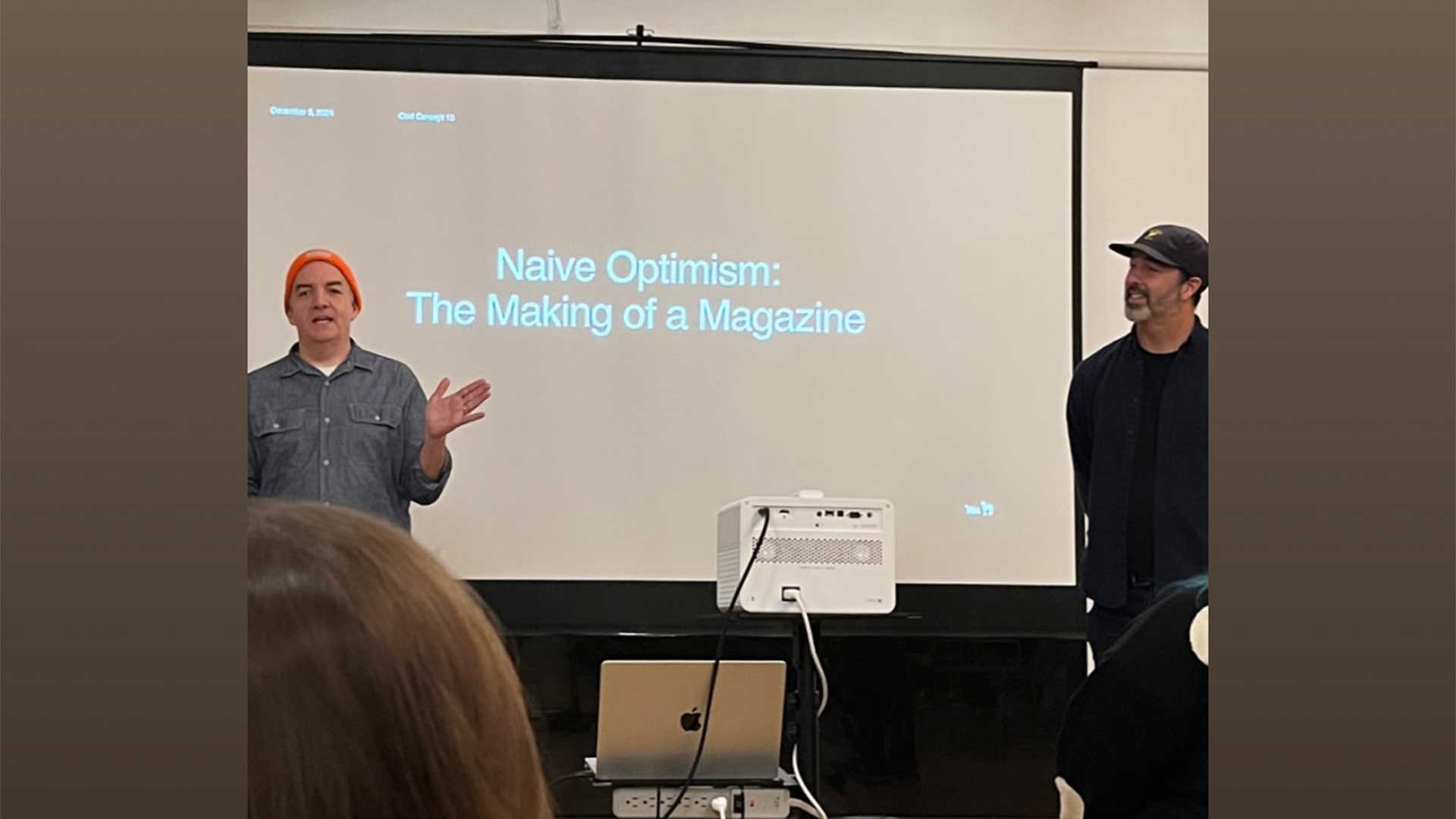
Photo: Donald Zhu
For those who weren’t able to attend Cool Concepts 10, here’s a less alcohol-infused version of the talk.
In the winter of 2022, our Creative Director, Dom, had taken a walk on the shores of Lake Ontario with his dog, Benji. The typically grey Toronto winter landscape deeply reflected Dom’s internal feelings. Hambly & Woolley had been fortunate through the pandemic, consistent work from clients new and old. But, feeling personally depleted, Dom had a general feeling of WTF?

Fast forward to summer 2022. The studio officially welcomed the team back in three days a week, and there was a rebirth. The first steps for Sian and me in the studio as designers and working with the rest of the team in person. Coincidentally, studio friend Nicola Hamilton opened up Toronto’s now-famous publication shop ‘Issues’. We took a studio field trip there, and everything instantly clicked. ‘Issues’ holds incredible importance in the design community. It has become a place of inspiration, a clubhouse and workshop space, a champion of independent publishing as much as major titles. And we felt all of that. Leaving, our Design Director, Frances, and Dom independently had the same guttural reaction: we need to make something for ourselves. The first sign of absurdity.
And then the high wore off.
Why should we make something? We’re a studio, we serve our clients with our craft and expertise. What gives us the right to make anything or say anything? So often dreams become vapour as doubt and fear press down on hope. So we tested the idea and poked at it. Why would we do this?
We make lots of things every day for our clients. But this needed to be from us. It also needed to be for us – not just the studio, but our community. Sure, we can call them designers, creatives, or colleagues. But we’re more than our titles. In this industry, at our base, we are curious.
Dom and Frances presented a deck to the other partners at H&W, expecting cautious recommendations or concerns. They were greeted with enthusiasm and support. And a call to be more ambitious! The absurdity grew larger.
Over months between client work and projects, we worked at understanding what this could, should and would be. We are gifted with a wide and deep network, and strategist Doug Dolan raised his hand first at crafting the core identity of what this could be called. Find was born and absurdity now had a name. With little more than a deck and a name, Flash Reproductions were next to raise their hand offering help and cheering us on. We continued to push, to ask questions and dissect grids, type, concepts and why this matters. In tandem, one of our studio’s designers, who wished to remain unnamed, developed what is now known as Hoof Display: the typeface that is inspired by our logo, which we absolutely adore.
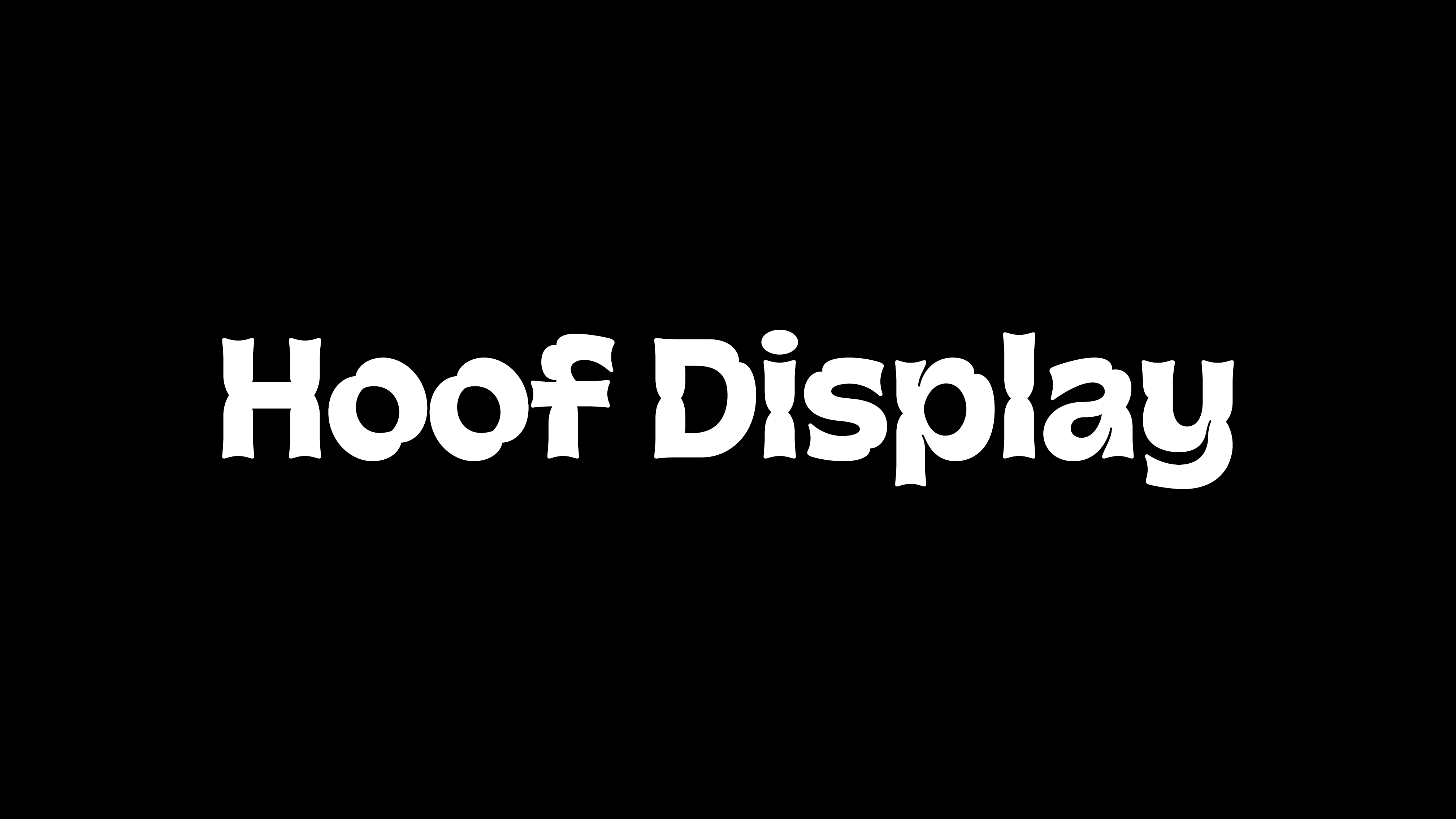
For content, we enlisted some talent from around the city, but mostly produced the content or stories from within the studio. We are endlessly thankful for the collaborators who believed in absurdity, in absolute dreams, and said, ‘Yes, I’d love to be a part of this’. Our aim was to be ready for the 2023 Design Thinkers conference in Toronto. To make that possible, we really had to do something new: work together. That might sound odd, but generally on client projects a few of us will work together, whoever has time or the specialty needed. This required all hands on deck. It was an incredible few weeks of presenting layouts and ideas, pushing back, elevating, going back to the drawing board. Pushing the work to be at the highest level we could make it.
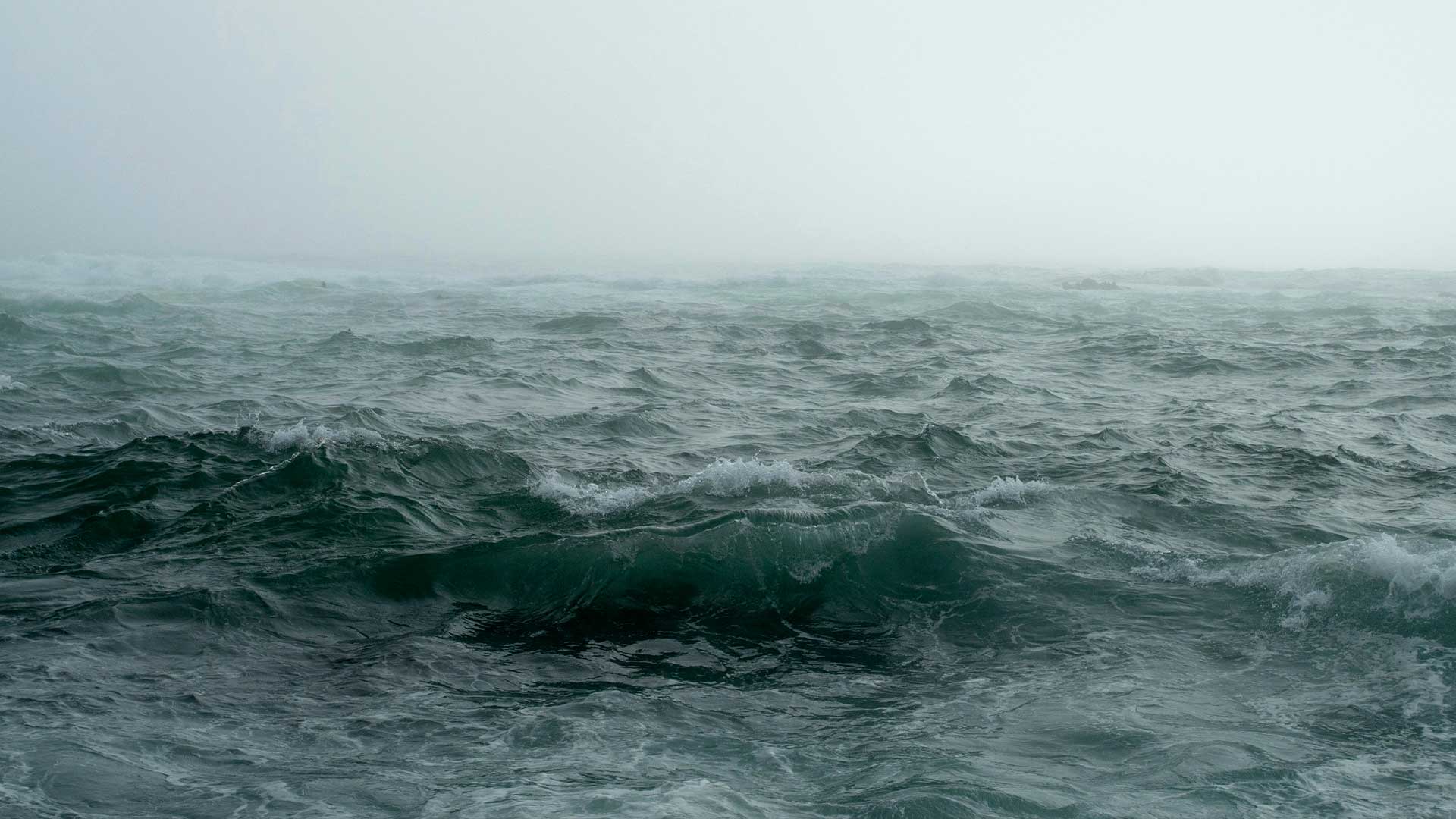
Let’s get dramatic for a moment. Launching a magazine from scratch isn’t so much a rocket launch as it is a ship sailing into a storm. In the open water, you are limited to what you have onboard: the tools, knowledge, crew and capabilities. Your parameters and limitations are set (for the most part). In making Find, this translated to page count, format, stories and all the art you will get, you have. The true test begins as the crew adapts to the swells and open sea.
As you approach the storm, you make ready everything you can, tie down sails and loose cargo. For Find, this meant buttoning down design decisions and locking down typefaces.
As you push through the storm, you need to pull ropes, lean or counter balance, and say, ‘Wait… wait… try this!’ Will it hold? As the storm passes, you come out the other side and see where things have landed. Everyone still onboard? In our case, we asked ourselves, ‘Do we still have consistency? What did we decide about hyphenations?’ And then, as the clouds disperse, one can see clearly. We can assess and adjust. And make our way to the trusted and safe harbour of our print partner.
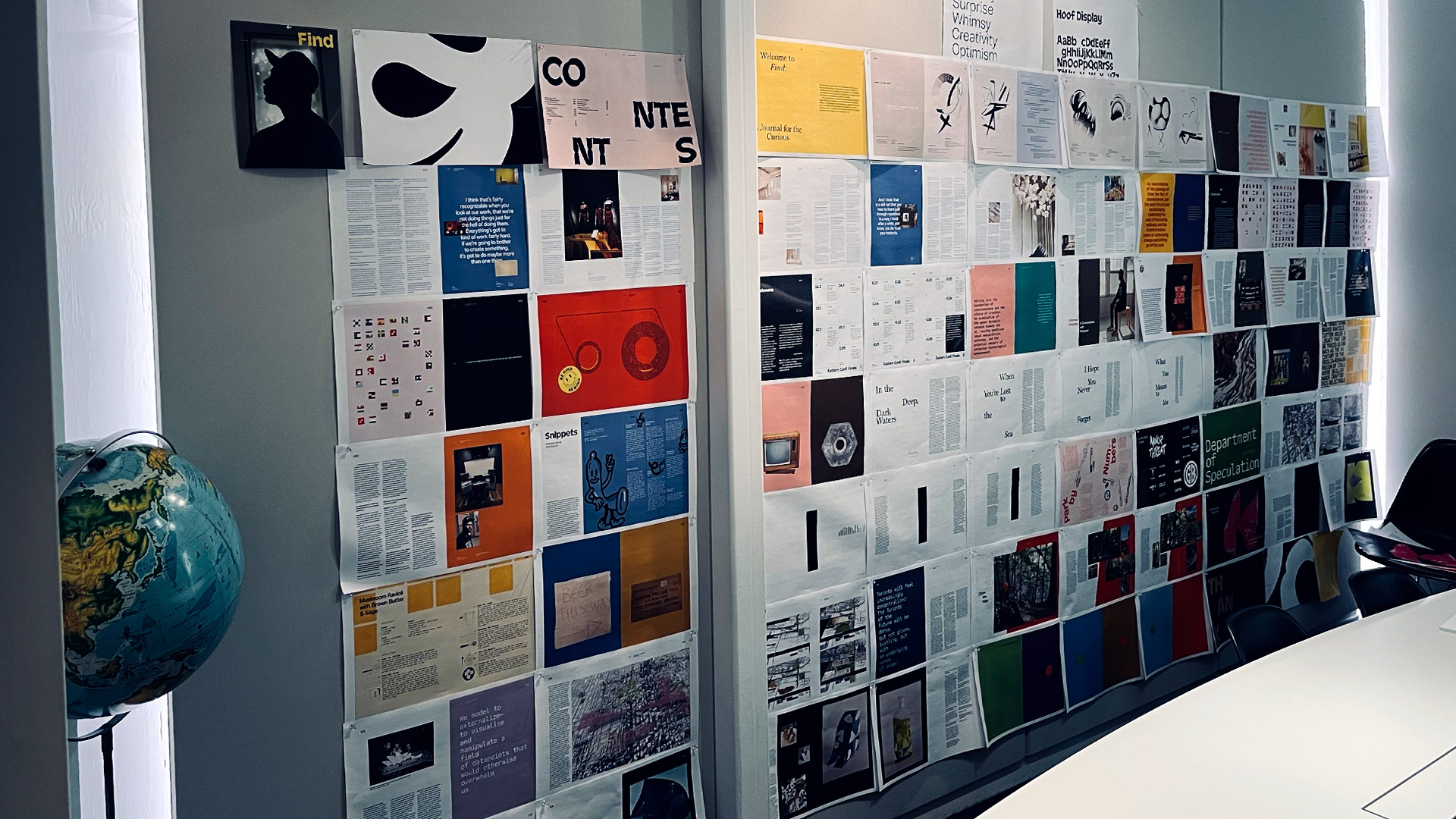
In putting ourselves in the seat of the client, we learned a lot and occasionally found ourselves surprised. It’s not easy to be in that position. We feel it opened up a wider empathetic view for how we see our clients. We’re fortunate to work with many who have dialled in all the details of a project and have answers for our questions. But to be in the position of asking questions, and needing to answer them ourselves, was a new challenge we don’t often experience. We highly recommend a studio project like this as an educational experience for a design team. It’s amazing what can be learned about process, expectation and scope in doing something like this.
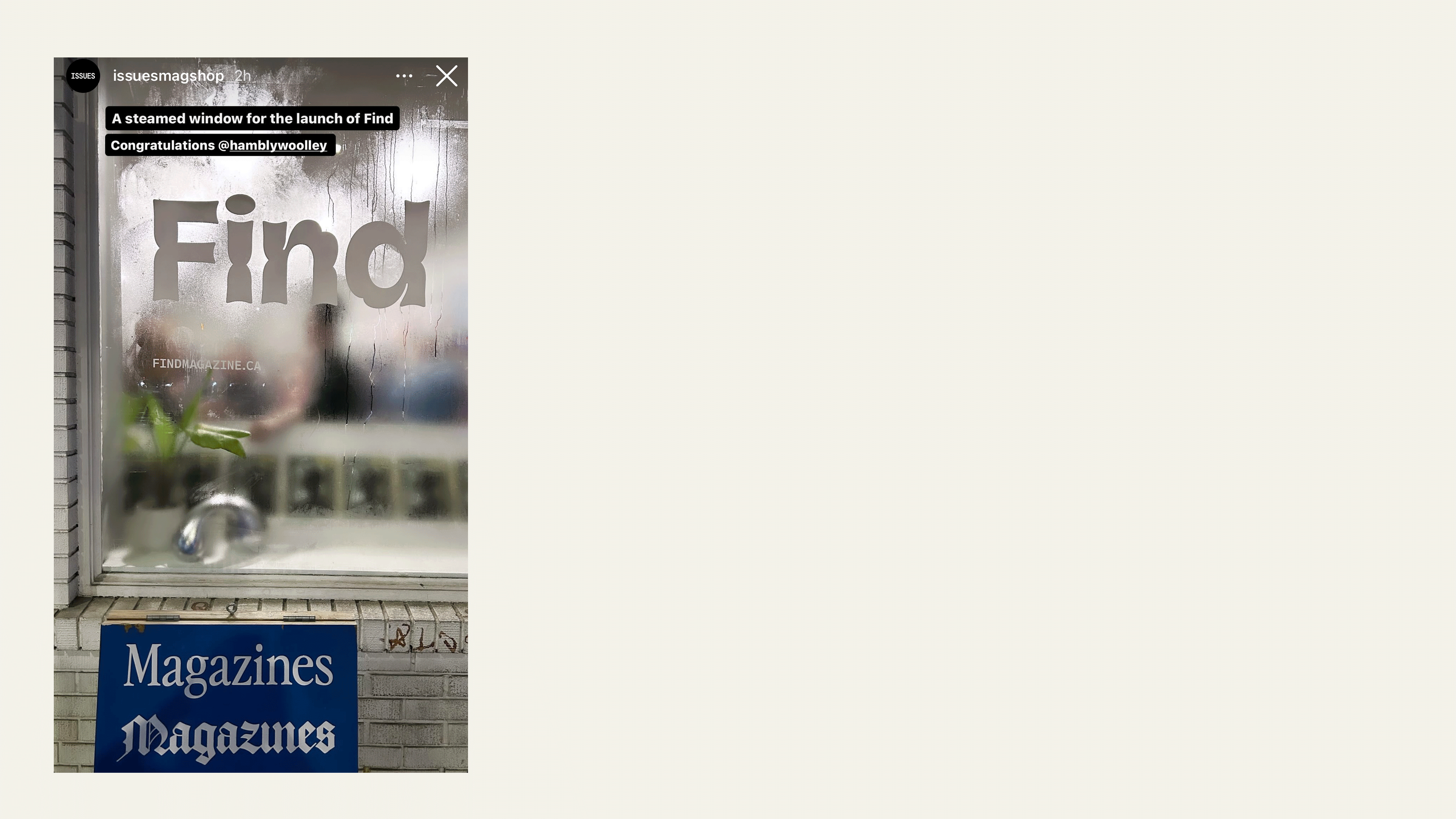
A lot has happened this past year with Find. We had our launch party, which was equal parts thrilling and terrifying as the design community cracked the spine on Issue 1. We continue to be so thankful for the feedback we’ve received, including Will Novosedlik’s piece on the Applied Arts blog. Will’s thoughtful review suggested our first issue was received as we’d intended, as a “journal for the curious.” We are blown away that it ended up in the UK store magCulture, with a review online as well. And if those weren’t award enough, we actually picked up a few acknowledgements nationally in Communication Arts and internationally at the International Typographic Awards.
It has been a ride, one we’ve learned and continue to learn from. And our deepest hope is that we can take lessons and apply them to Find Issue 2, due Spring 2025.
For those interested in learning more about Find, you can check out our case study, or order a copy at findmagazine.ca.